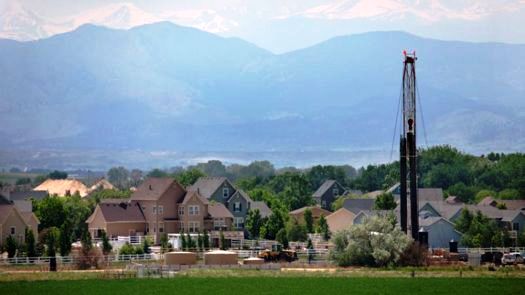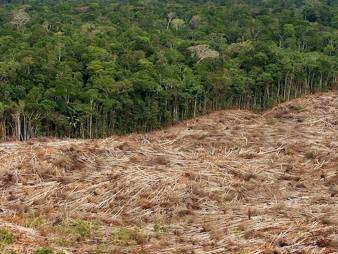The Permian Basin also faces high water competition, groundwater depletion and drought concerns. More than 85 percent of the Permian’s wells are in extreme water stress areas. Although average water use per well is much lower than in the Eagle Ford, the sheer number of wells in development is substantially larger, with over 9,300 wells reported developed since the beginning of 2011.
Colorado: The Denver-Julesburg Basin, part of the Niobrara shale formation, is another region with intense shale activity, much of it centered in Weld County, with nearly 2,900 wells developed since 2011 and an area marked by extreme water stress. Water demand for hydraulic fracturing in the state is forecast to double, to six billion gallons by 2015, more than twice what the city of Boulder uses in an entire year.
In California, nearly all of hydraulic fracturing water use is taking place in regions of extreme high water stress, although water use per well remains low. Most of the activity to date in California has been in Kern County, which is exposed to extreme high water stress due to factors such as large agriculture water demand and a growing population.
Many of the smaller shale plays (between 100 to 2,000 wells) are also in high and extreme high water stress regions, including the Piceance, Uinta, Green River, San Juan, Cleveland/Tonkawa and Anadarko Woodford basins.
“While the economic benefits of hydraulic fracturing are compelling, we must address all competing interests, particularly in relation to water use. For that we need factual data we can rely on to make informed decisions to ensure future water availability,” said Amanda Brock, CEO at Water Standard, a Houston-based global water treatment specialist firm.
The report also includes key recommendations for investors and shale energy companies for mitigating their water sourcing risks. Shale energy operators should:
- Disclose to Regulators, Investors and Other Stakeholders: total water volumes and sources used in each shale play, future sourcing needs, and plans for reducing water use; breakdown of present and future use from freshwater and non-freshwater sources; volume of water returning to the surface, revenues and future growth in water stressed regions.
- Implement Operational Practices to minimize water use; collaborate with industry peers and other industries on local water sourcing challenges; develop local source water protection plans; minimize the use of aquifer exemptions and deep well injection disposal sites whenever feasible.
- Engage with Stakeholders, including with: local communities on water needs and challenges before starting operations and after they begin; local and regional regulators on water challenges; employees and suppliers to provide incentives for reducing water use.
- Embed Water Risk and Opportunity across all business units, from the boardroom to the drill site.
“Water sourcing and management is becoming a key competitive advantage – and a critical risk – for oil and gas companies using hydraulic fracturing to unlock new reserves. Investors need the data to understand how companies are meeting these challenges on a regional or play-by-play basis in order to appropriately value companies and also engage with them to improve their practices,” said Steven Heim, Managing Director and Director of ESG Research and Shareholder Engagement at Boston Common Asset Management.
The report includes 3 interactive maps showing locations of hydraulically fractured wells against water stress, drought and groundwater depletion. See www.ceres.org/shalemaps
Check the following link to read/download the Full Report:
http://www.ceres.org/resources/reports/hydraulic-fracturing-water-stress-water-demand-by-the-numbers/view
Source: Ceres.
About Ceres
Ceres is a non-profit organization mobilizing business leadership on climate change, water scarcity and other sustainability challenges. Ceres also directs the Investor Network on Climate Risk (INCR), a network of 100 institutional investors with collective assets totaling more than $ 12 trillion. Ceres also directs Business for Innovative Climate & Energy Policy (BICEP), an advocacy coalition of nearly 30 businesses committed to working with policy makers to pass meaningful energy and climate legislation. For more information, visit www.ceres.org.



















